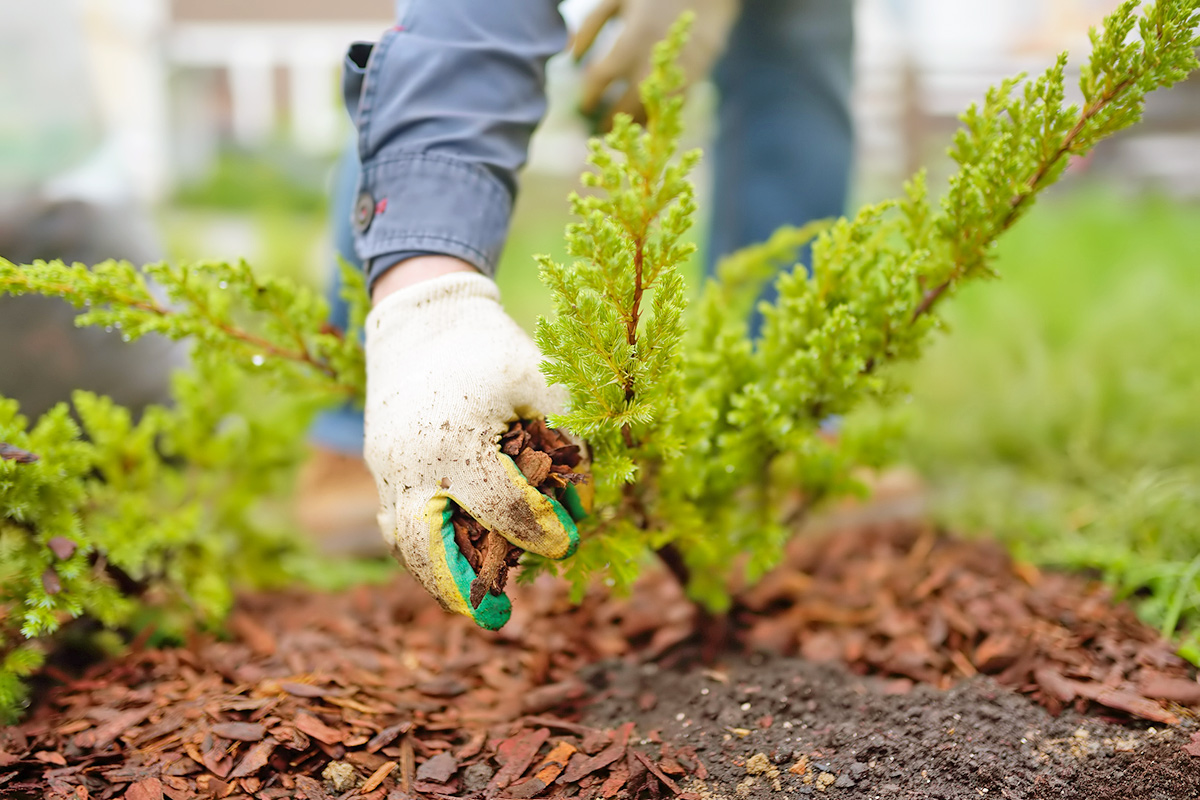If you’re a gardener, you know that plants are rarely perfectly content. Whether it’s too much or too little rain, excessive or insufficient sun, or temperatures that swing between too cool and too hot, plants are constantly contending with the conditions around them.
Extreme heat is a problem that crops up most often in midsummer, and heat waves are becoming longer and more frequent due to climate change. Keeping your plants cool and comfortable when the mercury soars might seem difficult (especially if you’re not a fan of working in the heat), but there’s an easy solution to help both you and your plants survive unscathed: mulch.
Using Mulch To Protect Your Plants
Mulch is basically anything you put down over the soil to protect your plants and make gardening easier. Commercial farms often use big plastic sheets as “mulch” to suppress weeds, but most home gardeners go for something natural. This could be anything you have easy access to, from commercial bark mulch to grass clippings, wood shavings, shredded leaves, straw, sawdust, seaweed, or even well-aged compost or manure.
Covering the soil around your plants with a 2- to 4-inch layer of mulch will protect them from the sun’s heat by shading and insulating the soil, keeping it cool. This also helps retain moisture, which is crucial during hot weather. You can double the impact of mulching by watering intelligently: either in the evening as temperatures begin to drop, or first thing in the morning. This ensures less water evaporates before reaching your plants’ roots. Providing shade can be extremely helpful; consider using a shade cloth or planting heat-sensitive plants where taller neighbors can shield them from the afternoon sun.
More from our network
House Outlook is part of Inbox Studio, which publishes content that uplifts, informs, and inspires.
Mulch Is a Year-Round Friend in the Garden
Mulch benefits your garden year-round, not just during the summer heat. Once your plants are well established and growing freely, applying mulch after a good weeding will help suppress weeds and prevent them from growing back. If you use manure or compost as your mulch, you’re also nourishing your plants and building richer, healthier soil year after year.
Finally, that same thick layer of mulch can be used to protect your plants through the winter. It’s especially useful for perennials or biennials that are at the edge of their hardiness range in your USDA growing zone, or for cold-hardy plants such as kale and broccoli whose seasons can be extended well into fall with a little help.



















